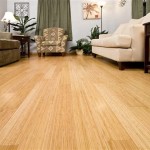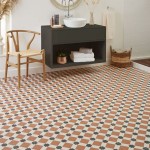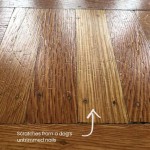Marble or Granite Flooring: A Comprehensive Comparison
Selecting the optimal flooring material is a crucial phase in any construction or renovation project. Both marble and granite represent popular choices, celebrated for their aesthetics, durability, and ability to enhance the value of a property. However, their distinct characteristics necessitate a careful evaluation to determine which material aligns best with specific needs and priorities. This article provides a comprehensive comparison between marble and granite flooring, exploring their attributes, advantages, and disadvantages to assist in making an informed decision.
Durability and Resistance
Durability and resistance to wear and tear are paramount considerations when evaluating flooring options. Granite, an igneous rock formed from slowly cooling magma, boasts exceptional hardness and density. This intrinsic composition renders it highly resistant to scratches, chips, and stains. Granite's inherent resilience makes it a suitable choice for high-traffic areas such as hallways, kitchens, and commercial spaces where durability is a primary concern. Its ability to withstand heavy foot traffic and resist staining from common household substances contributes to its long-term appeal and reduced maintenance requirements.
Marble, a metamorphic rock formed from limestone or dolomite, possesses a softer composition compared to granite. While still durable, marble is more susceptible to scratches, etching, and staining. Acidic substances, such as vinegar, citrus juice, and certain cleaning agents, can react with the calcium carbonate in marble, causing surface damage. Consequently, marble requires more diligent maintenance and care to preserve its pristine appearance. Protective sealants and prompt cleaning of spills are essential for mitigating potential damage. Despite its vulnerability, marble's inherent beauty and elegance often outweigh its maintenance requirements for homeowners prioritizing aesthetics.
Aesthetic Appeal and Design Versatility
The aesthetic appeal of flooring significantly influences the overall ambiance of a space. Marble is renowned for its distinctive veining patterns and luxurious appearance. The swirling lines and nuanced color variations inherent in marble create a sense of sophistication and timeless elegance. Marble is available in a diverse range of colors, from classic white and cream to bolder hues like black, green, and red, enabling designers to achieve a wide spectrum of aesthetic effects. The inherent translucence of some marble varieties allows light to penetrate the surface, enhancing its luminous quality and creating a visually captivating effect. Its inherent beauty makes it a favored choice for bathrooms, entryways, and living areas where aesthetic impact is paramount.
Granite, while perhaps not possessing the same level of delicate veining as marble, offers a unique aesthetic characterized by its granular texture and speckled appearance. The presence of various minerals, such as quartz, feldspar, and mica, contributes to the diverse color palettes and patterns observed in granite. Granite is available in a wide array of colors, ranging from earthy tones like beige, brown, and gray to bolder shades of blue, green, and black. Its natural variations and subtle textures add visual interest and depth to a space. Granite's versatility allows it to complement a variety of design styles, from modern and contemporary to traditional and rustic. It is often favored in kitchens, where its durability and stain resistance are particularly advantageous.
Maintenance and Upkeep Requirements
Maintenance and upkeep requirements are critical factors in determining the long-term suitability of flooring materials. Granite, due to its inherent density and resistance to staining, generally requires less maintenance compared to marble. Regular cleaning with a mild detergent and water is typically sufficient to maintain its appearance. The application of a sealant every few years can further enhance its stain resistance and protect against moisture penetration. Granite's non-porous surface minimizes the risk of bacterial growth, making it a hygienic choice for kitchens and bathrooms.
Marble, being more porous and susceptible to staining, necessitates more diligent maintenance. Regular sealing is crucial to protect against moisture absorption and staining. Prompt cleaning of spills with a pH-neutral cleaner is essential to prevent etching and discoloration. Avoidance of abrasive cleaners and acidic substances is paramount to preserve the surface's integrity. Marble flooring should be regularly polished to maintain its luster and remove minor scratches. While the maintenance requirements of marble are more demanding than those of granite, the resulting beauty and elegance often justify the additional effort for homeowners who appreciate its unique aesthetic qualities.
Cost Analysis and Budget Considerations
The cost of flooring materials is a significant factor influencing the selection process. Both marble and granite are considered premium flooring options, but their price points can vary depending on factors such as quality, rarity, and origin. Generally, marble tends to be more expensive than granite, particularly for high-grade varieties with intricate veining and unique colorations. The cost of installation can also influence the overall budget, as both materials require specialized tools and expertise for proper placement and finishing. Complex installations involving intricate patterns or custom designs can further increase the overall cost.
Granite, while typically less expensive than marble, still represents a significant investment. The cost can vary depending on the color, pattern, and origin of the granite. Installation costs are comparable to those of marble, requiring experienced professionals to ensure proper leveling and sealing. When evaluating the cost-effectiveness of marble and granite, it is essential to consider their long-term durability and life cycle. While marble may require more frequent maintenance and potential restoration, its timeless beauty and potential to increase property value can justify the initial investment for some homeowners. Similarly, granite's exceptional durability and low maintenance requirements can result in long-term cost savings, making it an attractive option for budget-conscious consumers.
Installation and Professional Expertise
The installation process for both marble and granite flooring demands professional expertise to ensure proper execution and longevity. Both materials are heavy and require precise cutting, fitting, and leveling techniques. Improper installation can lead to uneven surfaces, cracked tiles, and potential water damage. Experienced installers possess the necessary tools and knowledge to handle these materials effectively, ensuring a seamless and durable finished product. The subfloor preparation is a critical aspect of the installation process, as both marble and granite require a solid and stable foundation to prevent cracking and shifting. A properly prepared subfloor will enhance the longevity and overall performance of the flooring.
The use of appropriate adhesives and sealants is also essential for a successful installation. Marble and granite require specific adhesives that provide a strong bond and prevent moisture migration. Sealants are used to protect the surface from staining and moisture absorption, particularly in areas prone to spills and water exposure. Professional installers will be knowledgeable about the appropriate products and techniques for achieving a durable and aesthetically pleasing result. Furthermore, they can provide guidance on the proper maintenance and care of the flooring to ensure its long-term beauty and functionality. The investment in professional installation is crucial for maximizing the value and lifespan of marble and granite flooring.
Environmental Considerations and Sustainability
Environmental considerations are increasingly important in the selection of building materials. Both marble and granite are natural stone products, but their extraction and processing methods can have environmental impacts. Quarrying operations can disrupt natural habitats and contribute to soil erosion and water pollution. Transportation of these heavy materials can also contribute to carbon emissions. However, efforts are being made to promote sustainable quarrying practices and reduce the environmental footprint of stone production. Some quarries are implementing responsible mining techniques, such as minimizing waste, restoring disturbed areas, and using water conservation measures.
The longevity and durability of marble and granite flooring can also contribute to their sustainability. Their long lifespan reduces the need for frequent replacement, minimizing waste and energy consumption associated with manufacturing new materials. Reusing or recycling marble and granite remnants is another way to reduce their environmental impact. These materials can be repurposed for landscaping, paving, or other construction projects. Consumers can also choose to purchase locally sourced marble and granite to reduce transportation emissions and support local economies. By considering the environmental implications of their choices, consumers can make more sustainable decisions when selecting flooring materials.
Suitability for Different Applications
The suitability of marble and granite flooring varies depending on the specific application and intended use. Granite's exceptional durability and stain resistance make it an ideal choice for high-traffic areas such as kitchens, hallways, and commercial spaces. Its ability to withstand heavy foot traffic and resist staining from spills and grease makes it a practical and long-lasting flooring option for these environments. Granite is also a popular choice for countertops and backsplashes in kitchens and bathrooms due to its durability and heat resistance.
Marble's inherent beauty and elegance make it a favored choice for bathrooms, entryways, and living areas where aesthetic impact is paramount. Its luxurious appearance and ability to enhance the ambiance of a space make it a popular choice for creating a sophisticated and inviting atmosphere. Marble is also commonly used for fireplace surrounds, accent walls, and decorative features. However, due to its susceptibility to staining and etching, marble is not generally recommended for high-traffic areas or areas prone to spills. Proper sealing and diligent maintenance are essential to preserve its beauty and prevent damage in these applications. Ultimately, the best choice between marble and granite depends on the specific needs and priorities of the homeowner or designer.
.webp?strip=all)
Which Is Better Granite Or Marble Flooring Skytouch

Which Is Better Granite Or Marble Flooring Skytouch

Which Is Better Granite Or Marble Flooring Skytouch

Let S Get To Know The Difference Between Granite Vs Marble

Which Is Better Granite Or Marble Flooring Skytouch

5 Advantages Of Having Granite Flooring In Your Home Rk Marble Blog

Which Is Better For Flooring Marble Granite Or Tile Thediyplan

Marble Flooring Vs Granite Tile Deejos Engineers

Which Is Better Granite Or Marble Flooring Ceraite

5 Advantages Of Having Granite Flooring In Your Home Rk Marble Blog
Related Posts








